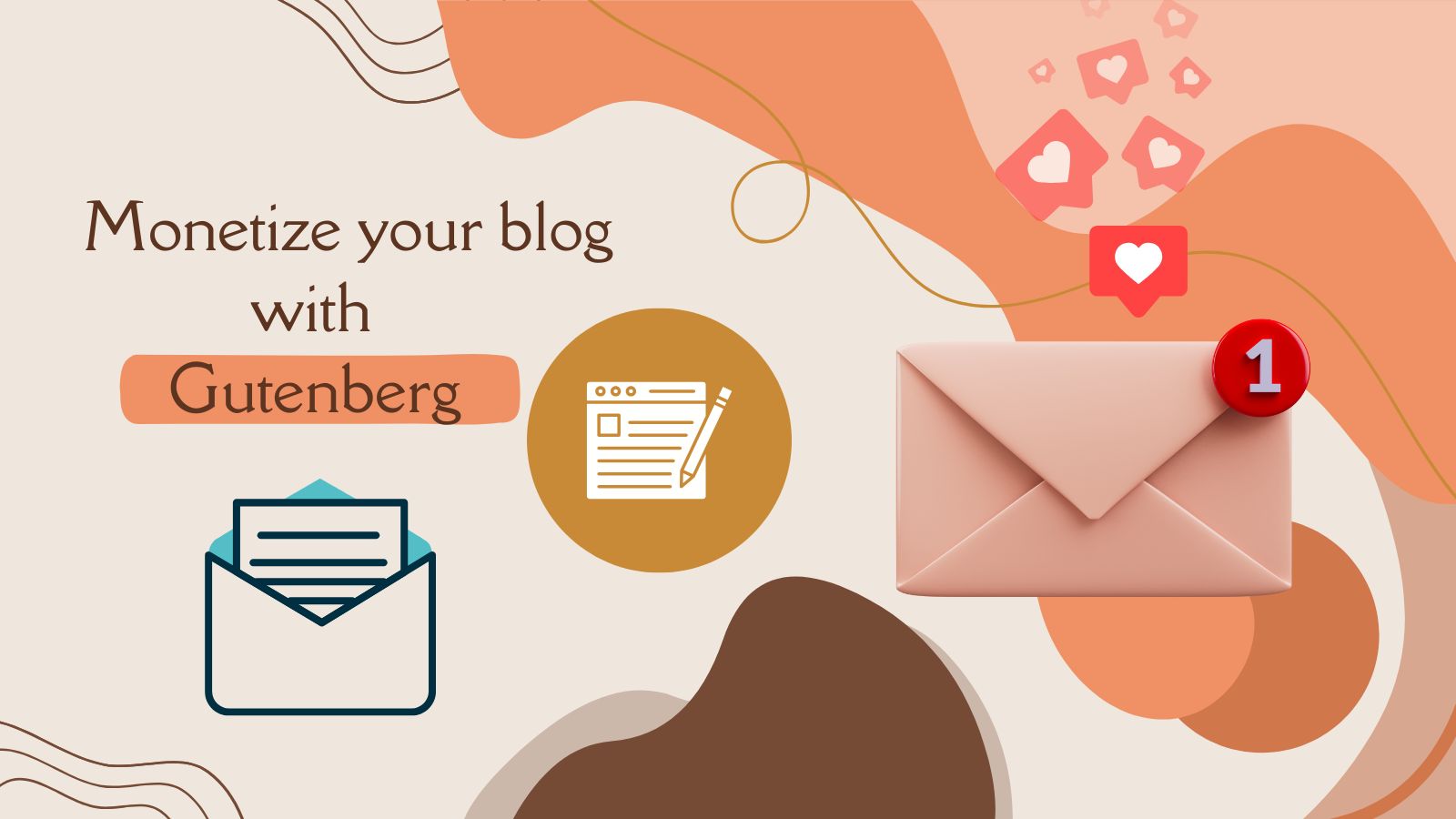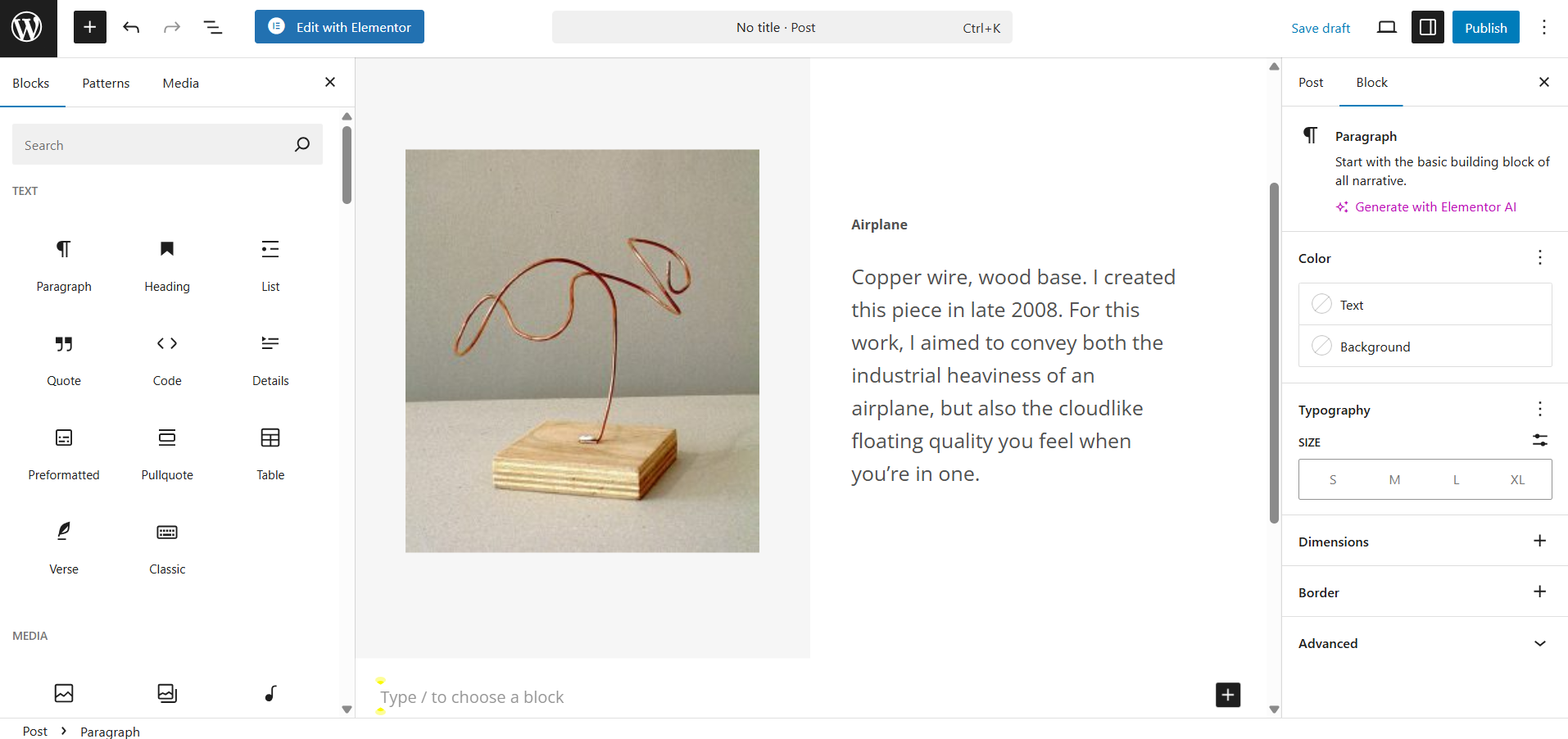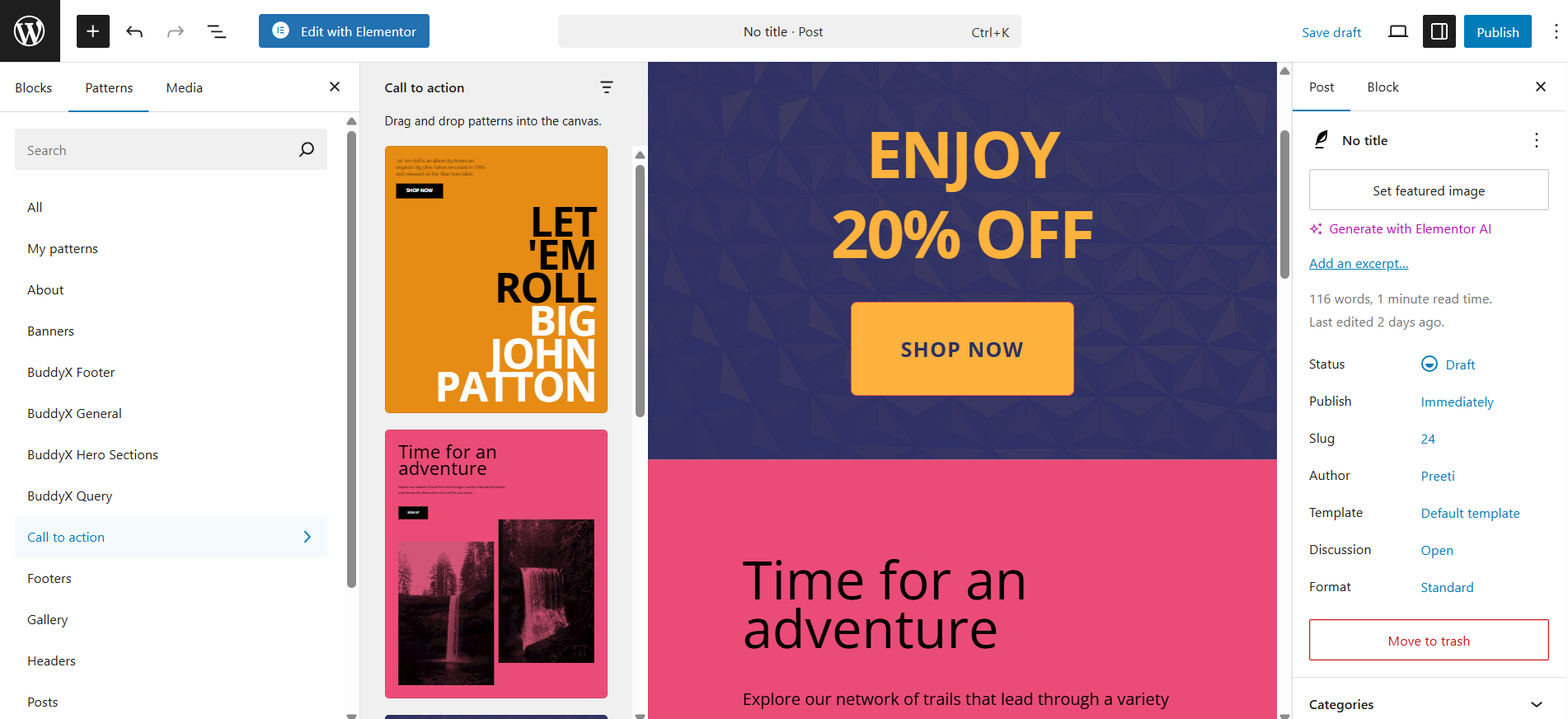Let’s be real blogging has come a long way from being just an online diary. Today, it’s a serious business model. But if your blog still feels more like a hobby and less like a money-maker, then it’s time to look at what might be missing. Spoiler alert: it might just be your layout strategy and yes, blog monetization depends heavily on it.
And that’s where WordPress Block Patterns step in like the ultimate blog upgrade. Whether you’re selling products, sharing affiliate links, collecting emails, or landing sponsorships, block patterns can help you monetize smarter, not harder.
What Are Block Patterns?
Block patterns are pre-designed, reusable layouts made up of multiple Gutenberg blocks. These patterns can include images, text, buttons, columns, and more. Instead of recreating common elements like a call-to-action section or an affiliate showcase each time you write a post, you can save these as block patterns and insert them with a single click.
They help bloggers and site owners streamline their content creation process and maintain visual consistency across multiple pages. Block patterns not only save time but also make your website look polished and professional.
For example, if you frequently write product review posts, you can create a pattern that includes a product summary section, feature list, pros and cons, and a call-to-action button. Every time you write a new review, you simply insert this pattern and fill in the details.
Why Block Patterns Are a Game-Changer for Monetization
Block patterns can significantly improve your monetization efforts by providing a clean, seamless way to insert promotional content. Unlike traditional ad banners or disruptive popups, block patterns feel native to your site and enhance user experience.
First, they offer design consistency. Whether you’re promoting a product, newsletter, or sponsored content, using a pre-styled block ensures your monetization elements always look great.
Second, they improve content workflow. Instead of manually designing each monetization element, you simply insert a pattern and tweak the content, saving you hours of repetitive work.
Lastly, block patterns improve engagement. A well-crafted, visually appealing monetization block captures attention and guides readers to take action, whether that’s clicking a link, signing up for a list, or purchasing a product.
A real-world example, The blog “Nomadic Matt,” which earns income from travel guides and affiliate links, could use block patterns to insert travel gear recommendations or booking widget links at the end of relevant blog posts. This maintains a smooth user experience while monetizing effectively.
How to Use Block Patterns for Blog Monetization
Let’s look at several effective ways to use block patterns to monetize your WordPress blog:
Affiliate Promotions
Design a pattern that includes a product image, a short description, a pros-and-cons list, and a bold call-to-action button with your affiliate link. This layout can be reused across multiple posts, ensuring uniformity and boosting click-through rates.
For example, if you’re running a food blog like “Pinch of Yum,” you could create an affiliate pattern promoting your favorite kitchen tools, complete with images, ratings, and links to Amazon.
Sponsored Content
Create a block pattern template specifically for sponsored posts. Include elements such as a branded header, a disclosure notice, a short product introduction, and a structured review format. This ensures your sponsored content always looks professional and complies with advertising guidelines.
A parenting blog like “Mommy on Purpose” might use a sponsored pattern to showcase baby products in collaboration with brands, formatted for easy duplication.
Newsletter Opt-ins or Lead Magnets
Use block patterns to promote lead magnets like free ebooks, checklists, or courses. Design a clean section with an image, brief description, and an email form integrated with your marketing platform. Reusing this pattern across your posts can help you consistently grow your email list.
Think about “Smart Passive Income” by Pat Flynn. His blog might use a pattern to consistently promote his free podcasting course at the end of relevant articles.
Product or Service Highlights
If you sell your own products or services, create block patterns that highlight key features, testimonials, pricing tables, or bundles. This helps maintain design consistency and keeps your offerings front and center throughout your site.
A WordPress tutorial site like “WPBeginner” could build patterns for their plugin promotions, using stylized sections that outline features, benefits, and calls to action.
Creating and Managing Your Own Block Patterns
As of WordPress 6.8, you can easily create and manage block patterns directly from the admin dashboard. Here’s how to get started:
- Design a section in the block editor using the blocks you need.
- Select all the blocks and click on the options menu (three dots).
- Choose “Create pattern” and give it a name.
- Save it, and it’ll now appear in your Patterns library.
You can also categorize patterns for better organization, making it easier to find and reuse them later. The WordPress pattern directory also offers a wide selection of free, pre-built layouts that you can import and customize.
For instance, using patterns from the official WordPress.org directory, you might find beautiful pre-made testimonial layouts that you can tweak for your brand and add to your product pages.
Best Practices to Maximize Results
To get the most out of block patterns for monetization, it’s important to follow some best practices:
Start by matching the pattern to the content. Don’t insert an affiliate product showcase in an unrelated blog post just for the sake of monetization. Relevance matters both for SEO and user experience.
Make sure your patterns are responsive. Always preview them on mobile devices to ensure that images, buttons, and text scale properly. Many users browse blogs from their phones, and poor mobile design can hurt conversions.
Track performance using analytics tools or URL parameters to measure which patterns are driving the most clicks or conversions. This data will help you refine your strategy over time.
Finally, don’t overuse monetization blocks. Keep your site reader-focused. A few strategically placed patterns are far more effective than overwhelming users with constant promotions.
Consider using A/B testing plugins like Nelio or Thrive Optimize to compare performance between different pattern styles and placements.
Final Thoughts
Block patterns are not just a design convenience, they’re a powerful tool for monetizing your blog in a streamlined, user-friendly way. They allow you to insert consistent, attractive, and conversion-optimized content throughout your website without rebuilding the wheel every time.
If you haven’t yet explored block patterns for monetization, now is the time. Set up a few key templates, start tracking their performance, and tweak them based on results. With just a bit of upfront effort, you’ll find yourself saving time and earning more, all while keeping your blog beautiful and reader-friendly.
Real bloggers across niches from travel to tech to parenting are using block patterns to blend content and commerce seamlessly. It’s your turn to join them.
Interesting Reads
Guide to Creating Block Patterns in WordPress
How to Use WordPress Block Patterns
Gutenberg layout design monetize your blog passive income blogging WordPress Block Patterns
Last modified: May 7, 2025





